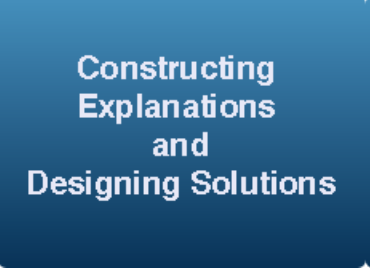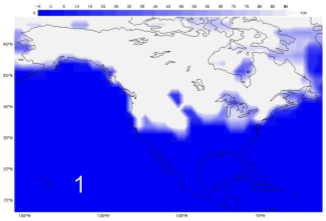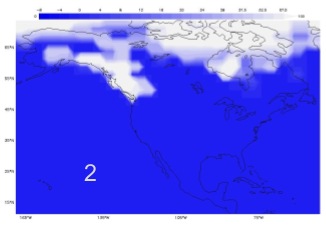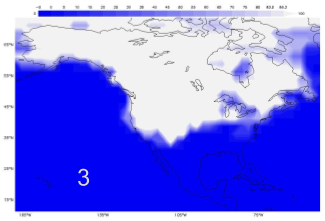Constructing Explanations and Designing Solutions with MND

The products of science are explanations and the products of engineering are solutions.
The goal of science is the construction of theories that provide explanatory accounts of the world. A theory becomes accepted when it has multiple lines of empirical evidence and greater explanatory power of phenomena than previous theories. (NRC Framework, 2012, p 52)
Example Questions
- How does the snow and ice coverage vary from these three images?
- What do you see as a possible explanation for these changes?
- Predict the order in which you may expect to find these values during the course of a calendar year and explain your reasoning. (January, March, June)
K-2: Constructing explanations and designing solutions in K-2 builds on prior experiences and progresses to the use of evidence and ideas in constructing evidence-based accounts of natural phenomena and designing solutions.
- Make observations from several sources to construct an evidence-based account for natural phenomena. (2-ESS1-1)
- Compare multiple solutions to a problem. (2-ESS2-1)
3-5: Constructing explanations and designing solutions in 3-5 builds on K-2 experiences and progresses to the use of evidence in constructing explanations that specify variables that describe and predict phenomena and in designing multiple solutions to design problems.
- Identify the evidence that supports particular points in an explanation. (4-ESS1-1)
- Construct an explanation of observed relationships.
6-8: Constructing explanations and designing solutions in 6-8 builds on K-5 experiences and progresses to include constructing explanations and designing solutions supported by multiple sources of evidence consistent with scientific ideas, principles, and theories.
- Construct a scientific explanation based on valid and reliable evidence obtained from sources (including the students’ own experiments) and the assumption that theories and laws that describe the natural world operate today as they did in the past and will continue to do so in the future. (MS-ESS1-4)9MS-ESS2-2)
- Apply scientific principles to design an object, tool, process, or system. (MS-ESS3-3)
9-12: Constructing explanations and designing solutions in 9-12 builds on K-8 experiences and progresses to explanations and designs that are supported by multiple and independent student-generated sources of evidence consistent with scientific ideas, principles, and theories.
- Construct an explanation based on valid and reliable evidence obtained from a variety of sources (including students’ own investigations, theories, simulations, peer review) and the assumption that theories and laws that describe the natural world operate today as they did in the past and will continue to do so in the future. (HS-ESS1-2)
- Apply scientific reasoning to link evidence to the claims to assess the extent to which the reasoning and data support the explanation or conclusion. (HS-ESS1-6)




